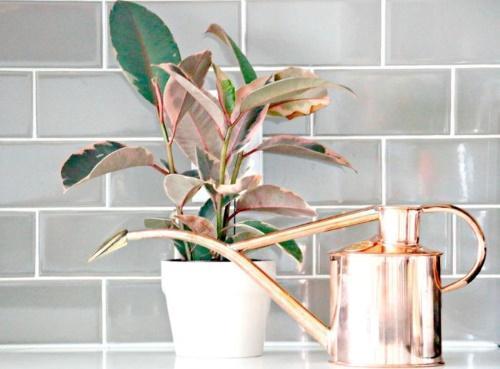Competent care of ficus is the key to the spectacular beauty of the plant
 Ficuses are one of the most attractive ornamental-deciduous plants that are widely used for landscaping, both office premises and private "estates". Luxurious foliage, small or decent size, rich dark green or cheerful variegated color of leaf plates, compact size or proud height of these plants cause admiration and desire to have such handsome men. In general, unpretentious flowers, ficuses feel good at home, if you initially take care of their comfort and sometimes pay a little attention to flowers. How to care for a ficus so that it “blooms and smells”?
Ficuses are one of the most attractive ornamental-deciduous plants that are widely used for landscaping, both office premises and private "estates". Luxurious foliage, small or decent size, rich dark green or cheerful variegated color of leaf plates, compact size or proud height of these plants cause admiration and desire to have such handsome men. In general, unpretentious flowers, ficuses feel good at home, if you initially take care of their comfort and sometimes pay a little attention to flowers. How to care for a ficus so that it “blooms and smells”?
First of all, you need to take care of the following points:
- Choose a place for the flower in the house where it will be light and warm.
- Establish a regular watering regime.
- Feed and replant the bush periodically.
- Correct the shape of the crown if necessary.
Ficus keeping conditions: where to put
Due to their tropical nature, ficuses love warmth and light. The air temperature in the room where the flowerpot stands should not drop below 16 degrees Celsius. It is especially important to take care that the bush does not freeze at the feet, so if the floor is cold in the house, it is better to put large specimens on a stand.
As for lighting, depending on the color of the foliage, the need for the sun also changes, namely:
- variegated varieties need more light;
- monochromatic green-leaved plant species are able to live in little shade.
Whatever species the ficus belongs to, the duration of its daylight hours must be at least 12 hours, including in winter, otherwise the bush will begin to shed its leaves.
How to water?
Ficuses - they are moisture-loving and need frequent and regular watering. In the summer, you will need to "water" the flowers up to 3 times a week, but not earlier than the top soil dries up. If the ground is wet all the time, the root system will not withstand such care and will rot. But in winter, especially if the room is cool, the frequency of watering must be reduced and the flower should be watered well enough once a week.
Ficuses are no less demanding on air humidity and respond well to spraying the crown. In varieties with large leaves, you will need to wipe them from time to time with a damp sponge.
The frequency of feeding and replanting
Since ficuses are decorative deciduous plants, fertilizers with a predominance of the nitrogen part must be chosen for fertilizing in order to stimulate the growth of deciduous mass. It is enough to make them twice a month from spring to autumn, when the bush is in the phase of active growth.
Ficuses grow quite quickly and young specimens up to 4 years old need an annual transplant with a pot change. This is best done in spring, while you should not take too large a flowerpot - the plant will grow more slowly in it. Old large ficuses are usually not transplanted, but simply renew the top layer of the earth.
Bush formation
Most types of ficus give in the formation, in addition, this method allows you to restrain their growth and create a voluminous, but low bush for indoor conditions.To do this, in April, you need to cut off the top of a young bush, and then periodically pinch the side shoots.